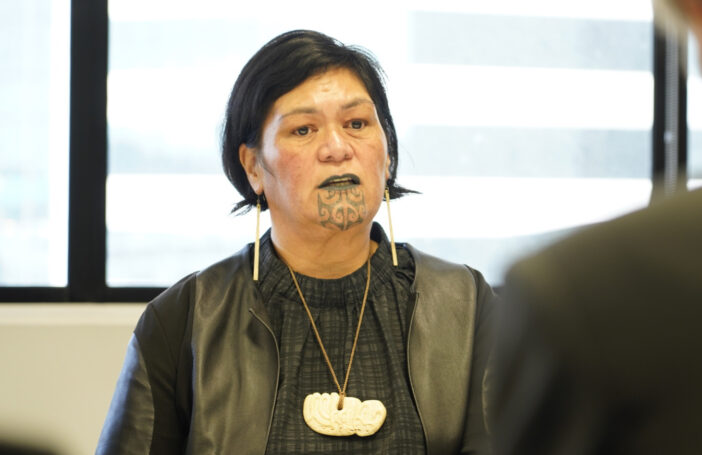Like migrating birds, every once in a while a flock of new ideas comes to rest in the world of aid. The most recent flock includes Doing Development Differently, Problem Driven Iterative Adaptation, and Thinking and Working Politically. These ideas weren’t all born in the world of aid, but they’re roosting here now. As always, the ideas come adorned with acronyms: DDD, PDIA and TWP.
Each idea is different in its own way. Like ornithologists, aid watchers are well aware that DDD, PDIA and TWP aren’t the same thing. But the similarities are such that you can speak of them in the same breath. They’re separate species, but they belong to the same genus. There’s a common intellectual thread. This thread is the belief that development problems are best tackled if their real nature is known, if the forces shaping key actors’ decisions – power, incentives, norms, formal rules – are understood, and if the limits of our knowledge are admitted up front, so that work can change as knowledge grows. This can be contrasted with a completely different development genus: Conventional Aid Work. In Conventional Aid Work the problem is often assumed to be technical: real humans are bundled out of the equation, solutions come from a playbook designed somewhere else, and limits to knowledge are wished into the future, where evaluators might do something about them, perhaps.
I like development’s latest flock of new ideas. The conventional aid work they’re contrasted with is a caricature, but I’ve seen enough poorly planned aid shambling round to think there’s room for improvement. DDD, PDIA and TWP also speak to my inner social scientist, who buys the idea that decisions aren’t made in a vacuum, and that power, incentives and rules matter. The same social scientist also thinks there are enough variables shaping people’s choices and enough people involved in most development issues to make understanding different configurations – aka context – crucial. As a researcher I know knowledge is hard to come by. As someone who’s conducted evaluations, I know that fully understanding if, how and why an aid project worked isn’t easy.
So I’m a fan. I would love it if these new ideas stuck around. But there’s a big problem: Doing Development Differently and the rest of its flock actually involve doing development differently.
Obviously, a few of the ideas could be captured and their acronyms used to decorate reports. But that’s not real change.
Real change will involve more. It will involve more experienced aid workers, for a start, so that they have time to learn, think and adapt. There also needs to be a willingness to accept some issues are intractable for now. And path dependency – doing things in a certain way because they’ve always been done that way – needs to be replaced by cautious steps into the unknown.
Change will also involve robust monitoring and evaluation with sound strategies for identifying project impact. Rigorous data gathering needs to start before a project starts. Systems also have to be consciously woven into project work so that adaptation can occur as soon as it is needed. Too little is learned, and it’s learned too late, if learning is limited to a couple of evaluators sent out in a hurry after a project is finished.
DDD, PDIA, and TWP all involve real breaks with business as usual. This isn’t easy. It’s challenging internally. It also has a political economy of its own. Politicians and the public (as well as private donors to NGOs) are instinctively averse to the idea of more staff, for example. Similarly, spending half a project’s budget on a really good monitoring, evaluation and learning system will seem insane to people outside the world of aid, but when tackling hard problems it might be money well spent.
Fortunately, once we get beyond mere jargon in reports, any serious attempt would be a great start. And an aid program needn’t change the way it worked everywhere overnight. Sessions in the last two Australasian AID Conferences have provided interesting examples of changing practice. The next step will be taking change to a larger scale. If Australia wanted to be ambitious, over time it could work on transforming its Papua New Guinea aid program, where it seems to face particular challenges.
DDD, PDIA and TWP require change. No one should kid themselves. Change means effort. In the end though, surely making an effort is the least we could do if we’re actually interested in doing development properly.
Main image republished with permission from the Autumn 2017 issue of Living Bird magazine. Illustration by Virginia Green, Bartels Science Illustrator, Cornell Lab of Ornithology.






After 46 years as a Shipping and Port Consultant in Emergent Maritime Nations, I think I am just beginning to understand what aid projects are all about.
The change to DDD would need to be pandemic.
The good projects I have worked on, in an international industry regulated by the same international bodies universally has meant different things to different nations.
The most successful have been in those nations where the majority of the politicians knew that they needed the project and they wanted the project, and where the policy of government was implemented by the civil servants.
The donor funded the project and then did not interfere; the recipients were hungry for knowledge and wanted to learn; there was a local champion who had recently graduated from an international place of higher (highest) learning, who I identified early; I lived in the nation I was advising for at least three years; there was no fly in fly out! (When I started in 1974 fi-fo was impossible to most parts of the World.)
The projects with the least outcome impact were where the project had been identified from outside by people who had little or no understanding of the industry being assisted; who were more interested in the political impact of giving aid (both at home and in the recipient nation), than the development impact of the aid they were giving; employing consultants who were ill-equipped outside of their academic specialities to comprehend the sociological aspects of their presence on the project, and where the time-scale to achieve the objectives was determined by budget limitations rather than the volume of capacity development needed. If no local champion was identified the outcome was worse. If the Civil Servants worked against the interests of elected government policy, project outcome was easily stymied.
I am not naive and know that I am asking for the moon for projects to have the most valuable outcome, but that is why I say a pandemic is needed for change at almost every level.
This is such an important concern that hits at the heart of long running problems of assistance, at least in the Pacific Islands. The article could be retitled as “Whose Results Matter?” – the donors’ technical and financial appearances of development or the recipient peoples’ needs? The issue not only requires the attention of DFAT but all “development partners”. However, it will need to be raised and republished every 12 months to accommodate donor and recipient staff turnover.
When the design for technical and financial inputs prevail over people development results and monitoring and evaluation is weak and, or poorly directed then few development lessons are learned. And if lessons are not learned the industry repeats its old mistaken approaches as decades of development experience will attest to in the Pacific.
The answer should not just be donor oriented and driven but recipient government understood and demanded.
Thanks Steve for the very interesting comment.
I agree with your points on M&E of course. Also, I think the point of sustaining learning in aid programmes where turnover (staff shifting from country-desk to country-desk) is high is crucial.
Thanks again for a very helpful post.
Terence
As a footnote: I should note this post was drafted pre-coronavirus crisis. It’s dated in that sense — as others have pointed out, the crisis will impose a form of DDD on aid work.
That said, I suspect the DDD we get from this shock will differ from the DDD we needed. I also think the fundamental challenges the post raises will still be with us for some time to come.
Hi Scott,
Thanks for your comment. It’s an interesting point.
I haven’t paid any notice to the iXc for about a year (not an intentional slight, but life has been busy). However, when I last looked, there were at least two issues preventing it from being an exercise in DDD.
The first was internal. Its ethos appeared to be primarily about putting bright new ideas into practice. No problem with that. But the ideas trialed often seemed to be bright new ideas from HQ, or selected by random processes, rather than bright new ideas born of a real understanding of country context. This still doesn’t render the ideas inevitable failures, but it’s not really DDD. Also, there seemed to be no real planning – initially at least – for strong evaluations. Once again, this is at odds with DDD. (Perhaps it’s changed now?)
The second was external. Statements regarding a higher appetite for risk seemed primarily to be aspirational political claims, rather than a real change in actual tolerance for risk. There’s much more that could be said about this, and the discrepancy is likely not the aid program’s fault, but it does serve as a good example of the domestic political economy constraints that may often make DDD hard.
Thanks again for an interesting comment.
Terence
You make a very good point. Implementing DDD TWP PDIA will require: fundamental reforms to DFAT’s processes for investment design; procurement; M&E; the capacity of DFAT staff; a higher risk tolerance; plus modified relationships between DFAT, managing contractors, and partner government stakeholders.
In the short term DFAT could consider piloting these methods in a controlled deliberate manner. Isn’t this what the InnovationXchange was meant to be doing?